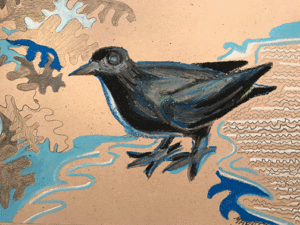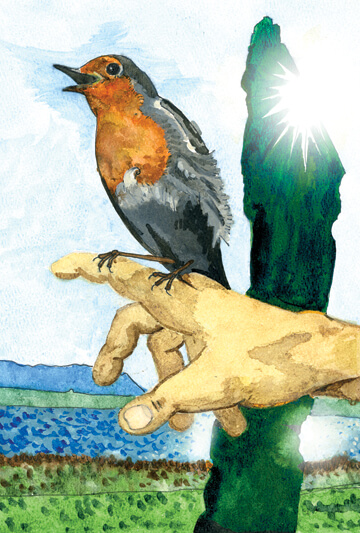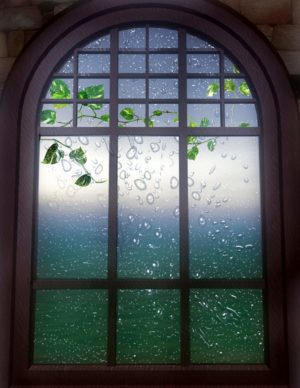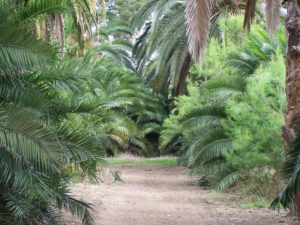Interview By Annabel Chiarelli
ANNABEL: Can you elaborate on the difference between “spiritual bypassing” and true subtle activism?
DAVID: There is no question that people can use ideas like subtle activism, prayer, “sending Light and Love,” and so on as a way to bypass the reality of a situation or to avoid having to take any kind of physical action while still feeling good about themselves for having done something positive. The problem here is the same as with those who are materialists and only see physical actions as having any value. Neither one, the denier and the bypasser, is fully accepting, much less understanding, the reality of the subtle worlds or of subtle energies. And given the nature of our culture and what is considered normative, I can understand why.
If you walk into a room where there has been emotional or physical abuse and violence, you can feel the tension in the atmosphere even if there is no physical evidence of anything that’s taken place there. Something in you tightens up and constricts. Conversely, if you walk into a room that has been filled with love and grace and goodwill, you can feel that as well. You enjoy being in that room; something in you relaxes and opens up. These are common experiences, often overlooked because we don’t pay attention to them or just shrug them off. But the fact is, we all experience subtle environments and energies even if we don’t talk about them or understand them.
Here’s a little story. A friend of mine decided to try an experiment. She had a small office in a large office building that was headquarters to a corporation. Each morning when she came to work, she would take time to do a simple ritual in her office, blessing everything in it and asking that this room be a haven of peace and love throughout the day for anyone entering it. She did this faithfully each day. Soon she discovered, to her secret amusement, that people were coming into her office who had no reason to be there or to see her. They were even coming from different floors of the office building. When she asked them what she could do for them, they often couldn’t say why they had dropped in. One man said, “I’m not sure why, but I suddenly felt like I wanted to come in here. It feels so good in your office, it makes my day!” They were all responding to the subtle energies she was consistently invoking into this room, but none of her co-workers understood what was happening. They just knew they liked the “feel” of the place and that they felt better through the day afterward for having visited her.
I know others who have done similar things. Another friend, put in charge of the dairy section of a supermarket, also made a point of blessing everything in that part of the store for which he was responsible. He said he would discover customers just standing amidst the displays of milk and cheese, not buying anything, but just bemusedly enjoying the atmosphere they felt there.
In both of these cases, these individuals were doing a kind of subtle activism. They were deliberately shaping and informing the subtle environment where they worked so that it would be a blessing to anyone entering it. And they did this not by thinking to themselves, “Oh, I want this room to be filled with Light and love,” but by exercising a discipline of daily invocation, mindfulness, and a loving attention to the physical surroundings. In other words, they worked at it, and the effect built up over time.
Another important element that separates a true subtle activist from a spiritual bypasser is that he or she is not doing the work to help themselves feel better. One doesn’t enter into or walk away from an act of subtle outreach thinking, “Oh, how wonderful of me to send these blessings,” or “I feel good for having done something positive for the world.” There’s no ego involved in the process. It’s not about you, it’s about the other; the emphasis is on the service. It’s about holding in oneself, in a disciplined way that involves mind, emotions, and body, the qualities you want to pass on to a specific subtle environment or to the energy field of another person. And because a true subtle activist recognizes that the world is a whole--not a physical world and a subtle world, but one world with physical and subtle aspects—they are open to physical actions they can take as well, even if it’s only making a financial donation to help a cause connected to their subtle work.
Now, one of the characteristics of the subtle realms is how responsive they are to thought. So it’s entirely possible that a simple, selfless thought of goodwill and compassion for someone else can set into motion a cascade of subtle energies that indeed end up blessing and energizing that person. Subtle activism need not always be a “project” requiring focused time and attention. But there’s nothing facile about it, either. Generally speaking, I need to invest time, energy, disciplined and clear intention, and sometimes even physical actions to make it work. At its most basic, I have to be—in my mind, my emotions, and in the felt sense in my body—the qualities I wish to offer to a specific subtle environment or to a person. And that can take work. You can’t just “send” love. You have to be love in that moment. You can’t just “send” peace. You have to be peaceful in that moment. You are what you “send,” and to come to the proper or appropriate inner state can take work on your part.
I cannot stress enough, or repeat enough, that the world is woven out of both subtle and physical elements, and that we live in both and are ourselves made of both. We always act in the world as both physical and subtle beings, even though we may not be aware of it because our attention gets so focused on the material side of things. The best subtle activism understands this and acts in both realms; it really should be called “holistic activism” incorporating both physical and subtle actions as appropriate. And a skilled holistic activist knows what can and cannot be accomplished in both realms. Subtle work of thought, subtle energy, and spirit cannot move the rubble off a little girl buried when her house was hit by an artillery shell. Someone has to physically move the stones. But physical work can’t bring a burst of hope into the mind and heart of a Syrian doctor laboring under the most primitive conditions, without proper medicine or equipment; it cannot energize his spirit so that he can continue working without being burdened by a debilitating cloud of depression and negative energies. Each kind of activity, physical and subtle, has its proper place, and in a whole world, they operate best when blended together.
[David’s subtle colleague offers another contribution:]
SUBTLE COLLEAGUE: I’d like to add a word here to complement what you’ve said. What an incarnate person calls thought is to us on our level only partial thought. It is incomplete, especially when you define thought as something that goes on in your brain alone. Thought is much more than a mental activity. Imagine your mind, your emotions, and your body as three aspects of a unified field. Thought to us is what is produced by this whole field, not simply by the mental portion of it. A thought is an expression of your whole being; if it originates only from your head, from your mind, it is incomplete. You might say it is one-third of a thought from our perspective.
This is why simply thinking about love or healing is often insufficient to make any difference in the etheric or subtle environment. This is especially true if this thinking has its origins not in compassion but in self-concern and self-aggrandizement, a desire to feel good about oneself for thinking in loving ways. From our perspective it’s clear why this is so. The thought may be noble and worthy, but the emotional component moves in the opposite direction, away from the other who is in need and towards the neediness of the one doing the thinking. And the body may not be involved at all; that is, there is no felt sense or sensation of the qualities represented by the thought.
For effective engagement with the subtle environment, you need to remember that you are a whole person and that you wish your “thought” to come from your unified field. You wish mind, emotion and body to all participate, each in its own way. And the body’s participation may be through sensation, through a felt sense of quality, or through actual movement and action, as dictated by the circumstances. However you do so, the body must be seen as being involved along with the mind and the feelings.
But there is another element which often goes unremarked. There is a fourth part to you that may be called “environmental.” This is the relationship you have with the world outside yourself. This relationship—the field of energy you form between yourself and the world—is as much part of your incarnation as your body or your mind. So you might ask, how does the world think through me? How is my thought unfolded and shaped by my connection to the world around me?
So, if you are sending a thought of love and healing to a benighted part of the world, be aware of how that situation as a presence or as a force helping to draw that thought and its power out from you. To tap that force, you need to be connected as a field of energy with that situation, which means accepting it for the condition it’s in. You must see and accept the reality if you are to engage with it and if it is to “think through you,” so to speak, enhancing the thought-form from you that bears the qualities you wish to give.
To use a metaphor, if you had a friend who was injured and bears the scars of that injury, you cannot recoil from the scars if you are to embrace your friend with love. You cannot allow the sight of the scars to separate you from your friend. You have to accept him as he is now, scars and all, and then love can flow without obstruction. If you are going to use subtle energies to bring help to places that are filled with violence and darkness, you cannot deny or turn away from that darkness. It is part of what calls out the power and shape of your unified thought, do you see? If you can accept the tragedy inherent in a situation, then that situation can “think through you” or join your thought to manifest the healing that it needs.
So, for us, thought is a product of mind, emotion, body, and environment all acting as a symbiotic and unified field of presence.
I leave you with my blessings.
DAVID: There’s one other thing. Not all of us are in a position to take physical actions or to make a physical contribution in a particular situation. I’m not in Aleppo, so I can’t physically move rubble or tend to the injured. Does this mean I am helpless or can’t make any kind of positive contribution? No. If I understand the nature of subtle energies, which are not restricted by physical distance, then there are positive things I can do. Will they make a difference? Maybe. I can’t guarantee it as there are too many variables, but I know that any energy of love or grace I can bring to a place like Aleppo, even from a distance using thought and spirit as the focusing and transmitting mechanisms, will not be wasted. It’s better than not offering any kind of blessing or prayer. After all, lifting the rubble off a little girl is not going to guarantee she will live, but it’s certainly better than leaving her buried. People in places like Aleppo can be buried under negative subtle energies; subtle activism, properly performed, can help lift this subtle rubble and give their spirits some breathing room for healing and re-energizing. Will it help? It’s better than leaving them buried.
Subtle activism is not for the lazy or the spiritual bypassers, but it can be for people who have no other way of helping. Not everyone has the physical courage or the aptitude to wade into a dangerous situation, putting their lives at risk for the sake of others. We can’t all be “white hats” in Aleppo. But we can be “white hats” in the world we inhabit, which brings me to the final thing I want to say.
When we think of subtle activism, the word “activism” draws our minds to dangerous, challenging, or difficult situations in the world. But really, the greater challenge lies in the brokenness of our human way of doing things. The violence and suffering in a place like Aleppo exists because violence is endemic in the ways we approach our world; it permeates our thinking and ways of behavior. It doesn’t always have to take physical form. Emotional and mental abuse is everywhere. There is a tendency in modern society to treat people like things, and things can be discarded when they are of no further use or destroyed if they become an obstacle.
So opportunities for holistic activism—activism that draws on both our physical and subtle (i.e. our spiritual, mental, and emotional) aspects—are all around us. They are in our homes, in our jobs, in our places of shopping and entertainment. How much love, how much grace, how much blessing, how much compassion, how much goodwill and open-hearted listening and attentiveness do we bring to the others we meet, the others we work with, the others we live with? We are everyday through our physical and subtle actions shaping the subtle environments that affect us all. What world are we creating in our own backyards?
The true holistic activist knows that every day the world presents him or her with opportunities to heal, to mend, to bless, and to help, either physically or subtly, or best of all, in both ways. This is a discipline of daily awareness. It’s work, but it’s the only kind of work that will truly transform the world.
Click on the links to read Part 1, Part 2, Part 3 and Part 4 of this interview.




 e subject of “collaborative fields” came up recently in a conversation I had with Mary Inglis, one of our
e subject of “collaborative fields” came up recently in a conversation I had with Mary Inglis, one of our  In 1979, the British scientist James Lovelock published a book Gaia: A New Look at Life on Earth. In it, he presented evidence that through the auto-regulatory systems of the biosphere, the Earth acted as a living organism. On the suggestion of this friend, the author William Golding, he proposed to call this organism by the Greek name for the goddess of the earth and the mother of all life, Gaia. This was the beginning of what was called the “Gaia Hypothesis,” co-formulated by Lovelock and the American microbiologist, Dr. Lyn Margulis. Although initially met with skepticism by their scientific colleagues, further research generated enough evidence in support of this hypothesis that it became accepted and graduated to becoming the “Gaia Theory.”
In 1979, the British scientist James Lovelock published a book Gaia: A New Look at Life on Earth. In it, he presented evidence that through the auto-regulatory systems of the biosphere, the Earth acted as a living organism. On the suggestion of this friend, the author William Golding, he proposed to call this organism by the Greek name for the goddess of the earth and the mother of all life, Gaia. This was the beginning of what was called the “Gaia Hypothesis,” co-formulated by Lovelock and the American microbiologist, Dr. Lyn Margulis. Although initially met with skepticism by their scientific colleagues, further research generated enough evidence in support of this hypothesis that it became accepted and graduated to becoming the “Gaia Theory.” On a lovely spring day in the early days of the Findhorn community in Northern Scotland, sometime around 1970, a visitor handy in the ways of the bulldozer was helping clear the land for the construction of the community's new building to house their printing endeavors. It was an innocent enough task as these things go, but as this earth moving was taking place, Peter Caddy, founder of Findhorn, received an emergency phone call. On the other end of the line was his friend and colleague Ogilvy Crombe — ROC to his friends — calling from Edinburgh where he lived. "What are you doing?!?" he asked in his soft Scottish accent. "I have an apartment full of angry nature spirits carrying suitcases saying they are leaving your community. They say that you have broken your promises of cooperation."
On a lovely spring day in the early days of the Findhorn community in Northern Scotland, sometime around 1970, a visitor handy in the ways of the bulldozer was helping clear the land for the construction of the community's new building to house their printing endeavors. It was an innocent enough task as these things go, but as this earth moving was taking place, Peter Caddy, founder of Findhorn, received an emergency phone call. On the other end of the line was his friend and colleague Ogilvy Crombe — ROC to his friends — calling from Edinburgh where he lived. "What are you doing?!?" he asked in his soft Scottish accent. "I have an apartment full of angry nature spirits carrying suitcases saying they are leaving your community. They say that you have broken your promises of cooperation."
 As we prepare for Lorian’s summer conference, many of us are exploring our relationship with Gaia, how to “think like a planet,” and what it means to be a loving and conscious member of the web of life that is our earth. David Spangler describes relating to Gaia as more than viewing the planet as a living organism. It’s about “a more holistic, ecological, systems-oriented way of viewing reality, seeing things in terms of interconnections, patterns, networks, relationships, integration, and interacting wholes rather than as collection of discrete but separate entities.”
As we prepare for Lorian’s summer conference, many of us are exploring our relationship with Gaia, how to “think like a planet,” and what it means to be a loving and conscious member of the web of life that is our earth. David Spangler describes relating to Gaia as more than viewing the planet as a living organism. It’s about “a more holistic, ecological, systems-oriented way of viewing reality, seeing things in terms of interconnections, patterns, networks, relationships, integration, and interacting wholes rather than as collection of discrete but separate entities.”
 When I used the term Gaianeering to describe the
When I used the term Gaianeering to describe the 
 A friend and I were talking recently about the many ways we perceive and interpret the world through our subtle senses. She shared a conversation in which someone made the statement, “My ‘first’ language is intuition.” That statement got me thinking about what I would consider as my “first language”. How do I first connect with and hear the world? How did it first speak in return? How might I widen my perception in order to better understand and communicate with others?
A friend and I were talking recently about the many ways we perceive and interpret the world through our subtle senses. She shared a conversation in which someone made the statement, “My ‘first’ language is intuition.” That statement got me thinking about what I would consider as my “first language”. How do I first connect with and hear the world? How did it first speak in return? How might I widen my perception in order to better understand and communicate with others? But multi-sensory information is not new to the subtle realms of our world. While we humans have privileged spoken language and only recently have come to recognize auditory, visual and kinesthetic senses as part of our communication platform, other realms communicate fluently through all these and a more formative language — the language of love and shared being. It is not specifically auditory, kinesthetic or visual, though it can use any and all of those forms. Love communicates through qualities such as respect, honor and joy and the energy of our intention in action. It is with these languages that we build our fluency for communicating in Gaia’s subtle ecology of life.
But multi-sensory information is not new to the subtle realms of our world. While we humans have privileged spoken language and only recently have come to recognize auditory, visual and kinesthetic senses as part of our communication platform, other realms communicate fluently through all these and a more formative language — the language of love and shared being. It is not specifically auditory, kinesthetic or visual, though it can use any and all of those forms. Love communicates through qualities such as respect, honor and joy and the energy of our intention in action. It is with these languages that we build our fluency for communicating in Gaia’s subtle ecology of life. Join Freya Secrest for
Join Freya Secrest for 






